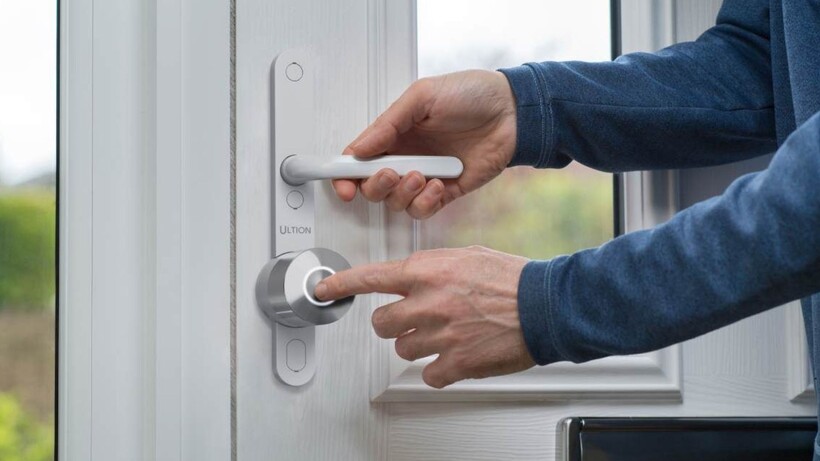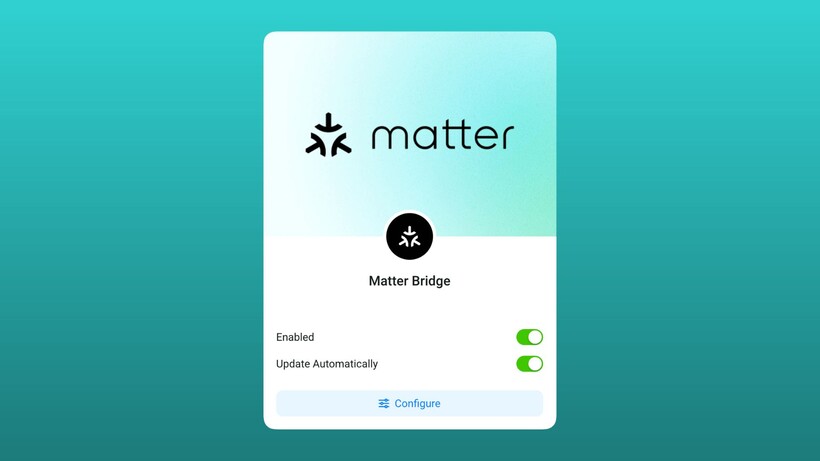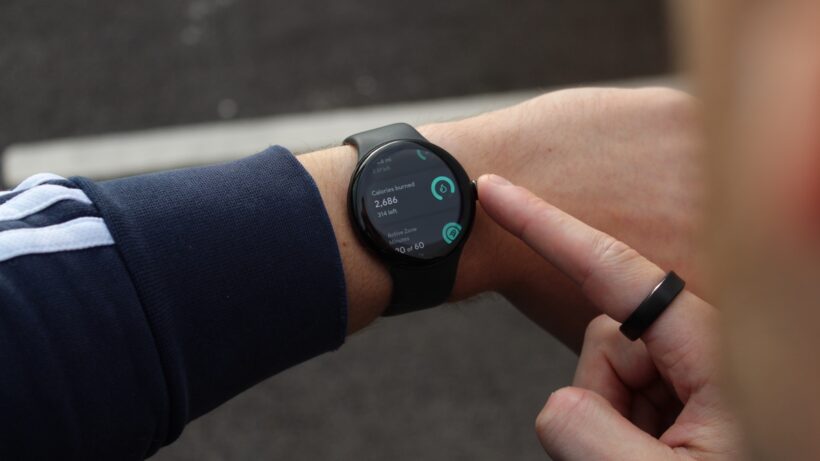
The wearable landscape has changed dramatically since the first fitness trackers arrived over a decade ago. For years, looking for a fitness tracker meant one thing: finding the best simple wristband that could log your daily steps and sleep.
In 2025, it’s very different. The sensors that monitor your body’s data—heart rate, recovery, and activity—are now baked into everything from smartwatches and sports watches to smart rings and screenless straps. Fitness tracking is no longer just about counting steps; it’s about gaining insights into recovery, stress levels, sleep quality, and training load.
This guide is designed to help you find the option that best suits your needs, budget, and style. We recognize that getting basic tracking is now easy and affordable—you can get a capable band for around $50/£50. However, the price quickly scales up when you consider different form factors, niche fitness insights, or dedicated smart features.
This is the core of our guide: we focus on the best-in-class options across every style and budget tier, from the basic band to the do-it-all premium tracker. We’ve reviewed and lived with every major fitness device released over the last decade, which also makes us uniquely placed to advise.
Read on to discover the top devices to consider and the pitfalls to avoid when choosing your next fitness tracker.
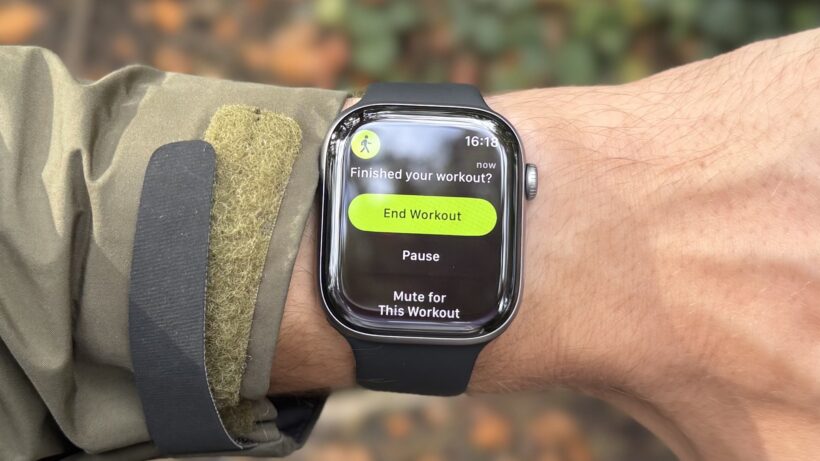
In this guide, we’ve detailed enough fitness trackers to fit every need, style, and budget. However, for those just beginning their search who are looking for a simple overview, here are the must-know options to consider.
Xiaomi Smart Band 10: The best simple, budget fitness band
The budget-friendly Smart Band 10 is the go-to pick for anyone who wants an old-school fitness tracker: one that focuses mainly on the basics. Data isn’t as precise as other brands’, and the app can take some getting used to, but the design is surprisingly good, and it’s still relatively feature-packed for logging workouts.
Oura Ring 4: Our top fitness tracker for women
The Oura Ring 4 may not be a traditional fitness tracker, but the brand has put the most work into making its insights fit for women. Partnerships with Natural Cycles for fertility and cycle tracking, with gold-standard sleep and (non-activity) heart rate accuracy, make this a top choice for those who want something more subtle and stylish.
Apple Watch Series 11: Our favorite fitness-tracking smartwatch
Apple’s latest smartwatch offers all the excellent features you would expect from a top fitness tracker. It’s a great choice for intermediate users. It features top-notch menstrual cycle tracking, wrist-based calls, music streaming, health monitoring, and various apps. Plus, it’s one of the most stylish and smartest trackers available.
Whoop 5.0: The best fitness tracker for athletes
The Whoop 5.0 is laser-focused on recovery, sleep, and readiness. It’s packed with actionable insights, and the trends established from the Journal and Healthspan are unique and effective. The MG model, should you choose to pay more, also offers cutting-edge insights such as blood pressure monitoring and AFib detection. It’s expensive, but it’s still one of the smartest trackers available.
If you like to run, then the Garmin has your back. VO2 max, performance insights, and Body Battery energy tracking add to a suite of running-coaching and pace-guidance features that make this entry-level Garmin a serious consideration.
How to choose the right fitness tracker

You’ll need to know what to consider to pick the best device for your needs. Here are our top tips.
The accuracy of step counts and heart rate tracking has improved dramatically over the past decade, and all big-name fitness trackers (those on this list) can be considered accurate. Accuracy is subjective, however. It’s more important that trackers offer consistent stats and encourage you to meet and exceed your personal goals, than have your steps *exactly* correct. For a sub-$200 tracker, it’s crucial to manage expectations. Heart rate accuracy during exercise (especially intervals or weightlifting) can be mixed. These devices are great for motivating you to move more, but they’re not necessarily high-performance training tools.
The new business model for premium trackers is the subscription. Fitbit/Google, Whoop, and Oura all lock their best insights (like readiness scores and deep sleep analysis) behind monthly fees. Brands like Apple, Huawei, Xiaomi, Ultrahuman, and Amazfit do not. If you just want to buy a device and always have access to your data, stick with the non-subscription brands.
This is the biggest choice. A band (like a Xiaomi or Fitbit) is slim, light, and great for 24/7 wear. A smartwatch tracker offers a much larger, more engaging screen, with a range of basic and advanced options. A ring (like Oura) or a screenless band (like Whoop) is the most discreet, designed to collect data passively in the background without screen-based distractions. Each form factor has its own strengths.
All trackers (with a screen) on this list will show you notifications from your phone. But true smartwatch features are rarer. An Apple Watch or Pixel Watch lets you use third-party apps, make contactless payments (Apple/Google Pay), and take calls. A Huawei Watch Fit 4 will let you answer a call on your wrist (via Bluetooth), but you can’t download Spotify, set up a cellular plan for standalone support, or pay for a coffee after a run.
Fitbit still makes solid-performing fitness trackers supported by the excellent Fitbit app and ecosystem. Its wearables are better suited to casual users than to runners and athletes, but they all offer a solid mix of daily goals and wellness stats. In recent years, however, rivals have caught up while Fitbit’s hardware releases have gone stale. The last device to be released under the brand’s name was the Charge 6 in September 2023.
A word from our expert
Conor Allison, Wareable Editor
“As the editor of Wareable, I’ve tested dozens of fitness trackers over the last decade. The secret that most brands won’t tell you is that the app is more important than the hardware. A cheap tracker is useless if its app is a confusing mess of numbers that you never open.
“A great fitness tracker is one you love wearing—and that may be because you forget it’s there. It should be comfortable, have a charging cycle that fits your lifestyle, and present your data in a way that’s simple, motivating, and easy to understand. It’s a big reason Fitbit dominated the basic fitness-tracking category in the early days of wearables. Its app, while now partly behind a subscription, remains one of the most encouraging and user-friendly.
The best basic fitness bands
For users who want a simple, affordable, and slim device for tracking, these are the best options. However, it’s also an area of the market that’s shrunk considerably over the last few years, hence why we only recommend two options.
There are a few key reasons for this. Fitbit releases have dried up considerably, with established brands like Xiaomi dominating the market with bands available for a fraction of the price. At the same time, users have generally favored smartwatch form factors over the slimmer band style (skip to the next section if that’s you).
Xiaomi Smart Band 10

- Key features: Large AMOLED display; 14-day+ battery life; 5ATM water resistance
- Best for: Unbeatable value for money
This 2025 model features a larger, brighter, and faster-refreshing AMOLED screen that feels incredibly premium for the price. The fitness tracking basics are all covered: it reliably tracks your steps, 24/7 heart rate, and sleep duration.
It’s also packed with an almost overwhelming number of sports modes and includes SpO2 monitoring. This year’s ‘Vitality Score’ offers a simple, PAI-like metric to gamify your weekly activity. The battery life is the main draw, easily lasting two weeks between charges.
The data isn’t as polished as Fitbit’s, and the app can be busy. Yet, for a simple, motivational, set-and-forget tracker, this offers 90% of the features for 30% of the price.
Fitbit Charge 6
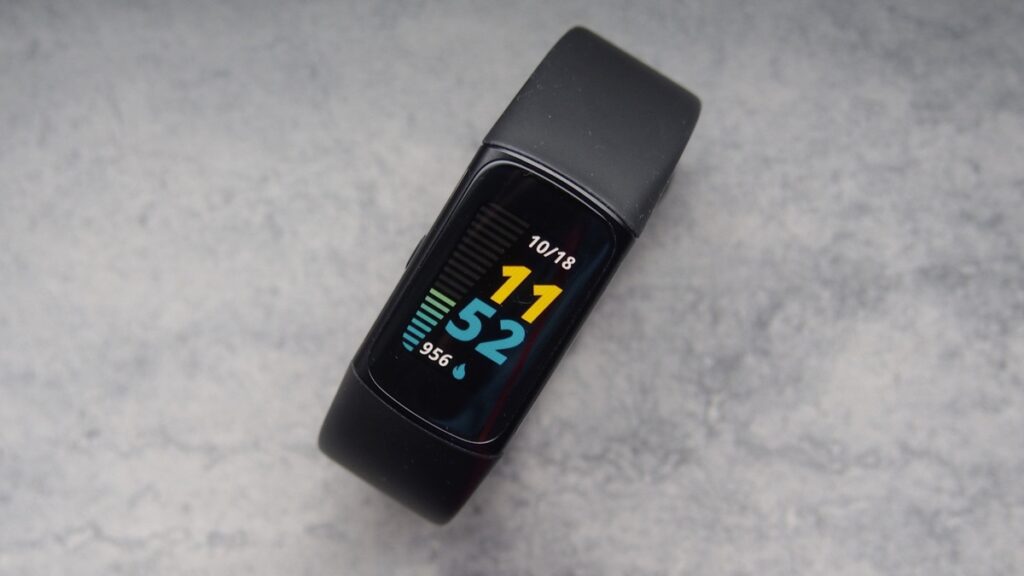
- Key features: ECG & EDA sensors; built-in GPS; Google Maps & Wallet integration
- Best for: The best premium band experience for beginners
The Fitbit Charge 6 is the most powerful and polished band you can buy, but it comes with caveats.
It excels at the fundamentals, offering arguably the most accurate and easy-to-understand sleep tracking on the market, presented in Fitbit’s famously intuitive app.
It’s also a powerful health device, packing an ECG for heart rhythm checks and an EDA sensor for stress monitoring. Its integration with Google Maps and Wallet makes it a genuinely smart band.
However, during testing, the built-in GPS was very unreliable, and some of its best features are locked behind a Fitbit Premium subscription.
It’s also old, having launched in 2023, and we expect a replacement in 2026. It’s a great choice, but only if you find it on a big discount.
- Check out our full Fitbit Charge 6 review
The best fitness trackers in smartwatch bodies
For users who want a larger screen and a watch-style form factor without the price or complexity of a ‘proper’ smartwatch, these devices now dominate the $100-$200 market.
And for good reason: they pack in tons of tracking features and are often every bit as good at logging steps, workouts, and heart rate as devices over double their price. The drawback, like with the bands above, is the lack of integrated smart features.
Huawei Watch Fit 4

- Key features: 1.82-inch AMOLED display; dual-frequency GPS; 7-10 day battery life
- Best for: The best value fitness tracker on the market
The hardware is exceptional, with a bright, responsive AMOLED screen that rivals an Apple Watch. Its fitness tracking is also surprisingly powerful, featuring accurate dual-frequency GPS and offline mapping—features previously unheard of at this price. It also offers reliable heart rate and sleep tracking, presented well in the Huawei Health app (no subscription required).
The main trade-off is that it lacks smart features, such as third-party apps and contactless payments. Given Huawei’s ban in the US, it’s also not as widely available as other brands (which is why we recommend looking at Amazfit’s wares if you’re stateside).
Still, if you’re an iPhone or Android user who wants a beautiful, long-lasting tracker that nails the fundamentals, this is the one to beat.
- Check out our full Huawei Watch Fit 4 review
Amazfit Active 2
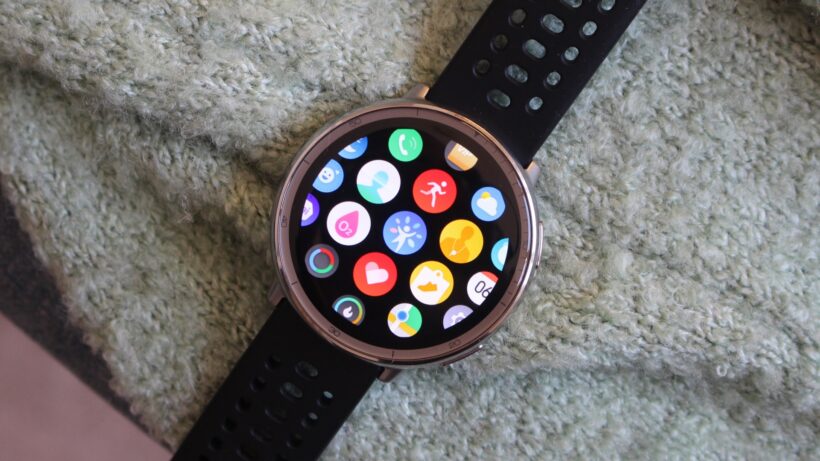
- Key features: Full offline mapping; external sensor support; Zepp AI Coach
- Best for: A feature-packed, round-faced tracker
If you prefer a traditional round watch face, the Amazfit Active 2 is an incredible value-for-money alternative to the Huawei. For just $99/£99, it’s crammed with features usually reserved for more expensive watches.
The highlight is its full offline mapping and the ability to pair external sensors (like a heart rate chest strap), making it a genuinely capable, if basic, workout partner. The AMOLED screen is bright, and the Zepp app offers a readiness score and AI coaching (though these can be hit-or-miss).
The GPS and onboard heart rate aren’t as accurate as the Watch Fit 4, and the OS can feel sluggish. However, for the sheer number of features you get for the price, it’s an almost unbeatable budget option.
- Check out our Amazfit Active 2 review

- Key features: 1.97-inch AMOLED display; 10-day+ battery life; offline map support
- Best for: A budget square-faced alternative
The Amazfit Bip 6 is another outstanding budget tracker that directly competes with the Huawei Watch Fit 4. Its main draw is the huge, bright AMOLED display, which is a massive upgrade over the old Bip models.
It nails the fitness tracker basics: step counting, sleep tracking, and continuous heart rate monitoring are all solid for spotting daily trends. Like its sibling, the Active 2, its standout feature is offline map support, which is absurd for a watch at this sub-$80 price point. It also supports external heart rate sensors.
The GPS isn’t dual-frequency and can be inaccurate, and the training insights feel a bit conservative, but these are minor complaints. It’s an excellent, low-cost tracker that feels and looks much more expensive than it is.
- Check out our full Amazfit Bip 6 review
Focused workout trackers
This section is for the users who are moving beyond simple steps and want to track specific sports (like running) or dig deeper into their body’s data.
They’re a little more expensive (and niche) than the catch-all smartwatch-style devices above, but are great for those primarily concerned with getting more detailed information on their fitness and workouts.
Garmin Forerunner 165
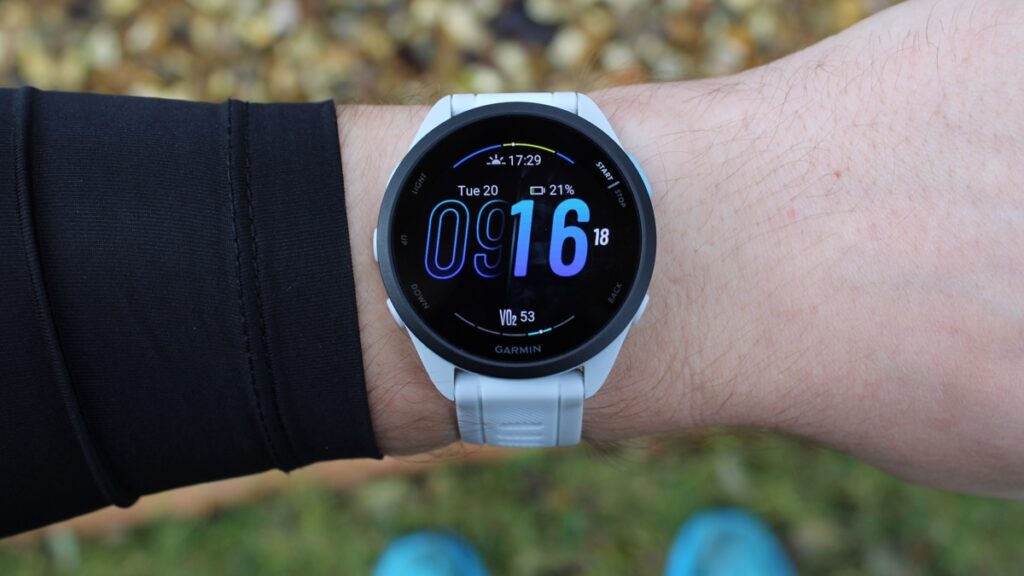
- Key features: Vibrant AMOLED display; Garmin Coach training plans; Body Battery energy monitoring
- Best for: The best beginner’s running tracker
It’s a fitness tracker first, with excellent all-day tracking of steps, sleep, stress, and Body Battery (Garmin’s fantastic energy-level metric). But it’s also an accurate running watch, giving you access to Garmin Coach adaptive training plans, PacePro pacing strategies, and reliable GPS.
It has a beautiful AMOLED screen and a week-long battery. It lacks the advanced analytics of its bigger siblings—not surprising given its price and place in the Garmin family. Yet, for a new runner who wants a device to guide them through their first 5K or half-marathon, this is an outstanding (and subscription-free) choice.
Amazfit Helio Strap
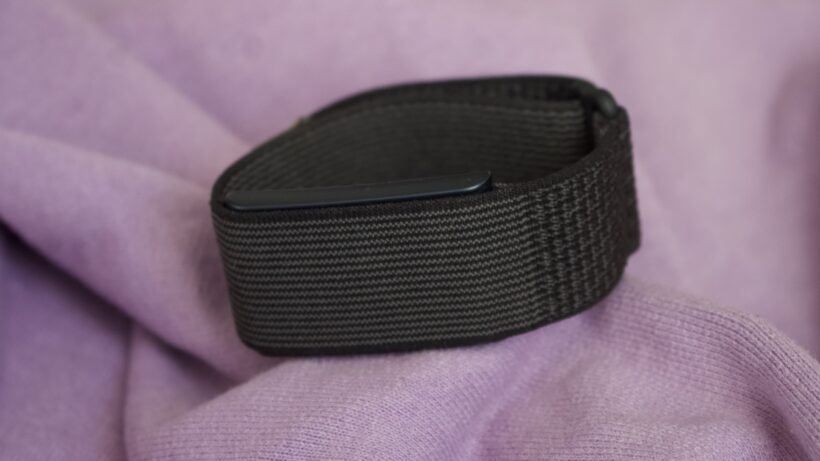
- Key features: Lightweight screenless band; can be worn on wrist or upper arm; subscription-free
- Best for: A powerful, subscription-free alternative to Whoop
The Amazfit Helio Strap is a compelling new entry in the screenless tracker market and a direct challenger to Whoop. It successfully replicates the core function—tracking heart rate, sleep, and training effect—but without requiring a monthly fee.
The hardware is lightweight and comfortable, and our testing found its heart rate tracking impressively accurate, particularly when worn on the optional upper-arm strap. It provides useful training features like VO2 max and ‘Recovery Time’ suggestions, all powered by its BioCharge energy metric.
While the automatic workout detection can be overly sensitive and the Zepp app lacks some polish, it’s an excellent value and a great way to try the screenless lifestyle without the commitment of a subscription.
Garmin Vivoactive 6

- Key features: Advanced sleep & wellness tracking; 10-day+ battery life; jack-of-all-trades sports modes.
- Best for: A Garmin wellness tracker that isn’t focused on running
If the Forerunner 165 is for the budding runner, the Vivoactive 6 is for the wellness-focused generalist. It packs all of Garmin’s best fitness tracking features—Body Battery, advanced sleep tracking with nap detection, and 24/7 health snapshots—into a premium smartwatch body.
It has GPS for tracking runs, walks, or rides, but it also excels at tracking things like HIIT, yoga, and golf. It’s less of a hardcore training tool and more of a holistic, 24/7 wellness companion that helps you balance activity and rest.
With a 10-day battery and a beautiful AMOLED screen, it’s the ideal choice for the user who does a bit of everything and wants to understand their body’s energy levels without being pushed to run a marathon.
- Check out our full Garmin Vivoactive 6 review
For users with a bigger budget who want the most advanced data, the best app experience, or the tightest smartwatch integration, these are the top options to consider.
Apple Watch Series 11
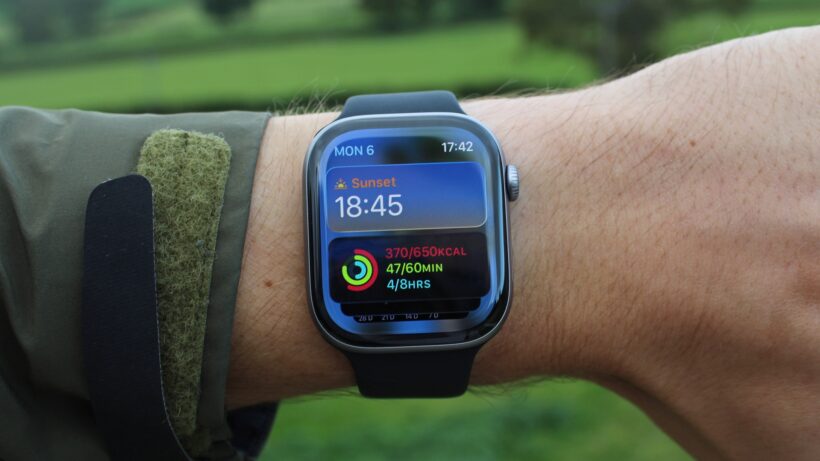
- Key features: Best-in-class health monitoring (ECG, Hypertension); seamless iPhone integration; vast App Store
- Best for: iPhone users who want the best all-in-one device
The Apple Watch is the ultimate fitness tracker and smartwatch for iPhone users. Its fitness tracking is built around the simple, motivating Activity Rings. But beneath that simplicity is a powerful health-monitoring device.
It features a clinically-validated ECG, sleep apnea detection, and new passive hypertension notifications (on Series 9 and later). The fitness-tracking data from watchOS 26 is excellent, and we’ve found both the heart rate accuracy to be as good as any device on the market. GPS, despite not being dual-frequency, is also excellent in most conditions.
The only drawback is the 1-2 day battery life. However, you can also consider the Apple Watch Ultra 3 if you want to stretch it to 2-4 days.
- Check out our full Apple Watch Series 11 review
Google Pixel Watch 4
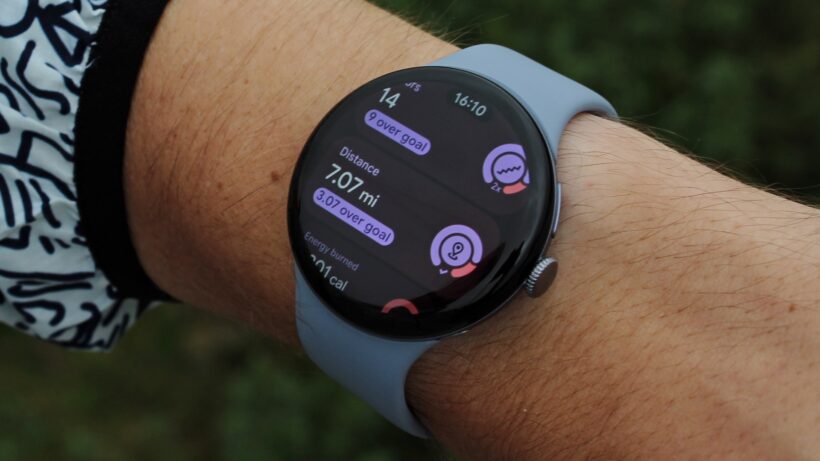
- Key features: Excellent Fitbit tracking; dual-frequency GPS; 2-day battery life (45mm)
- Best for: Android phone users who want the best all-in-one smartwatch
Its secret weapon is its deep and exclusive Fitbit integration. You get all of Fitbit’s fantastic, beginner-friendly sleep-tracking and motivation features, combined with a premium Wear OS smartwatch. It has an ECG, a cEDA sensor for stress tracking, and a Daily Readiness Score (now free).
It’s also a much more serious workout tracker than before, thanks to a reliable dual-frequency GPS and an excellent heart rate sensor. In testing, we found that heart rate and distance data closely aligned with the industry’s gold standard: devices from Apple and Garmin.
With a solid 2-day battery (on the 45mm model) and a beautiful design, it’s the top choice for any Android user who wants a single, do-it-all device.
- Check out our full Google Pixel Watch 4 review
Whoop 5.0 & Whoop MG
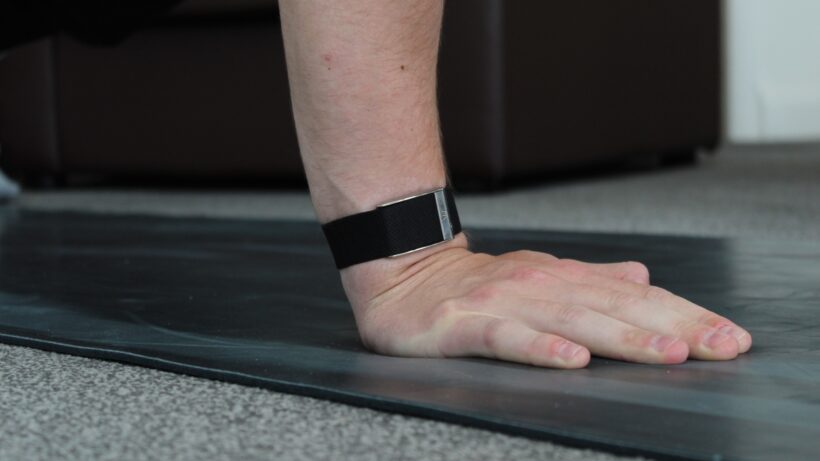
- Key features: Screenless design; 24/7 recovery & strain coaching; actionable insights from the intuitive Whoop app
- Best for: Data-driven athletes focused on recovery and tracking trends
The Whoop 5.0 (and more health-focused Whoop MG) has no screen, but it’s one of the most comprehensive and robust fitness trackers money can buy.
Essentially, it’s a 24/7 recovery coach designed for one purpose: to tell you how ready your body is to perform. It does this by balancing your daily Strain (exertion) with your nightly Sleep and Recovery (based on HRV and other biometrics).
The app is unparalleled at providing actionable, daily advice. Features such as the Journal, Healthspan, and Advanced Labs have all contributed to members of the Wareable team making lifestyle changes in response to compelling trends highlighted by Whoop.
The hardware is also highly versatile. It can be worn on the wrist, bicep (what we recommend for the best heart rate accuracy), or in Whoop-designed clothing.
- Check out our full Whoop 5.0/MG review
Oura Ring 4
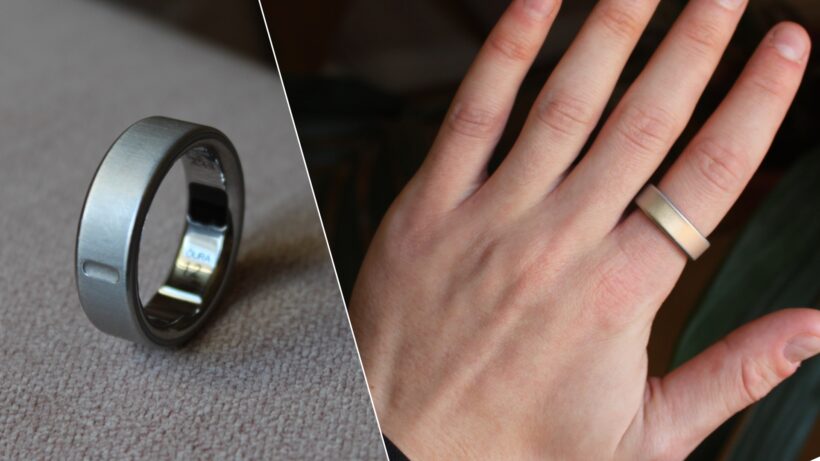
- Key features: Discreet ring form factor; highly accurate temperature sensing; best-in-class sleep analysis.
- Best for: Passive 24/7 monitoring of recovery, steps, stress, and sleep
The Oura Ring 4 is a fitness tracker that monitors you from the finger, pulling in insights from sleep and daily tracking, and presenting it all in an easy-to-understand app.
Intuitive Readiness and Sleep scores are coupled with tailored insights to help you understand the meaning behind the data. Sleep tracking, stress monitoring, and health features all proved very accurate when we compared them to rival trackers in our review tests.
However, as with any smart ring, native workout tracking can’t compete with wrist-based alternatives. It’s why it’s essential to supplement Oura data with integrations from other trackers if you crave fitness tracking insights beyond basic step tracking (though it also offers some more advanced features in this area, such as VO2 max estimates).
The other downside is the cost and subscription fee. Oura justifies this somewhat by being the industry leader in new features, which help keep the experience fresh. However, it’s still a much higher investment than most other fitness trackers and smart rings.
- Read our in-depth Oura Ring Gen 4 review
Garmin Forerunner 970
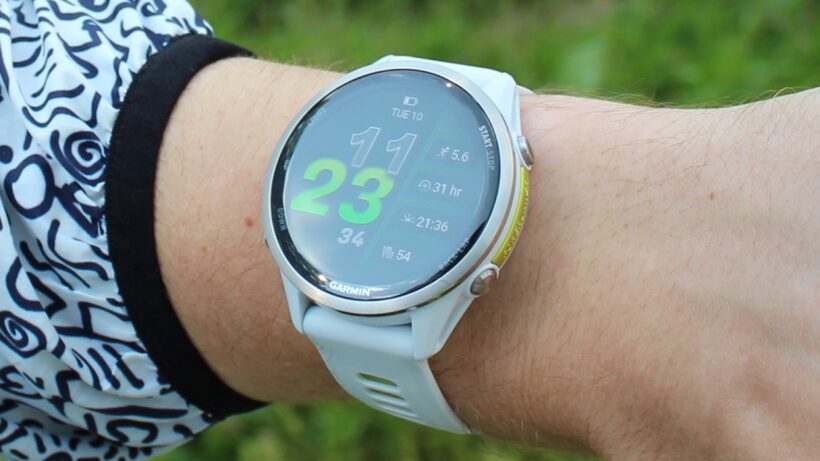
- Key features: Sapphire crystal display and built-in flashlight; advanced running insights; best-in-class GPS accuracy
- Best for: The ultimate dedicated sports, workout, and fitness tracker on the market
The Garmin Forerunner 970 is, in our opinion, the best out-and-out sports/workout/fitness tracker on the market. It sits perfectly between the brand’s core Forerunner models and the rugged Fenix line.
It’s a premium tracker that features advanced health metrics like an ECG app, Skin Temperature tracking, HRV Status, and the excellent Body Battery for 24/7 wellness monitoring.
For workouts, it offers unparalleled insights for runners, including new metrics like Running Tolerance, and boasts a supremely accurate Multi-Band GPS.
While its price is high and some advanced metrics require an additional chest strap, its combination of premium durability (sapphire glass), decent smartwatch features (music and payments), and deep training data makes it the ultimate, subscription-free option for serious athletes.
- Check out our full Garmin Forerunner 970 review

